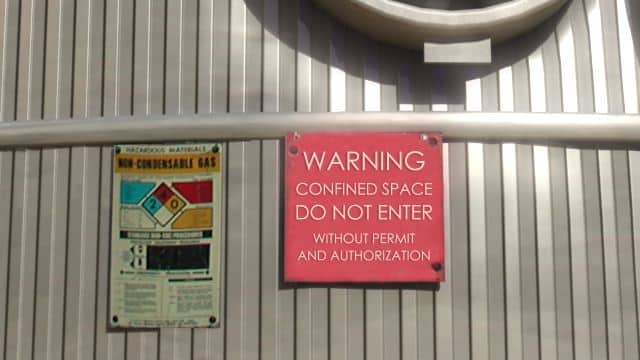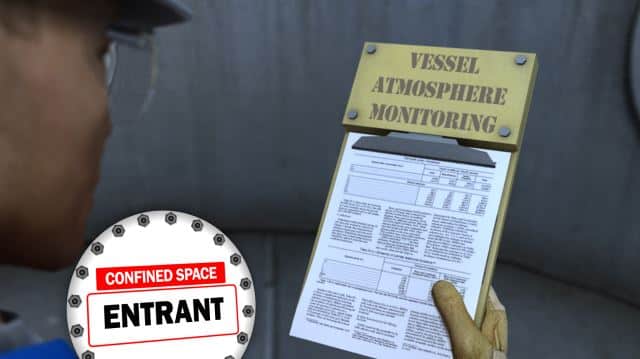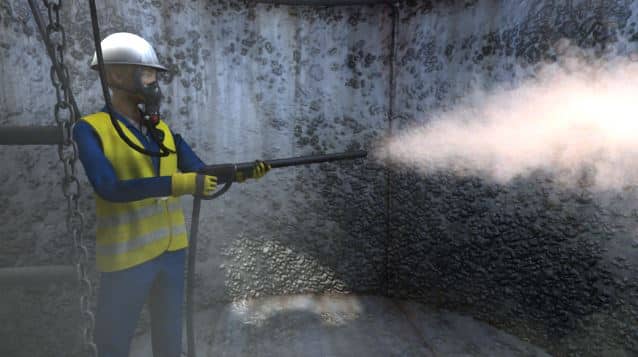




Confined Space Entry Awareness
A confined space is a work area with sufficient space for a person to fit and perform work, limited means of entry and exit, and a design that was not intended for continuous worker occupancy. This confined-space-entry online course will provide general awareness on confined spaces, differentiate between a permit-required and non-permit required confined space, and describe the job roles and responsibilities involved in confined space entry.
Request a demoCourse Details
Learning Objectives
By the end of this online course, you will be able to:
- Define a confined space
- Identify specific hazards that may exist within a confined space
- Describe the job roles and responsibilities involved in confined space entry [and]
- Identify steps to safely manage and eliminate hazards in a permit-required confined space
Specs
| Course Level | Intermediate |
| Languages | English, Arabic, Portuguese, Chinese, Dutch, French, German, Italian, Japanese, Korean, Tamil, Polish, Russian, Spanish, Thai, Czech |
| Compatibility | Audio, Video |
| Based on: | 29 CFR 1910.146: Permit-Required Confined Spaces |
Key Questions
A hazardous confined space is defined as a work area which has the following characteristics: sufficient space for a person to fit within and perform work, limited means of entry and exit, and a design that was not intended for continuous worker occupancy.
What are examples of confined spaces?Some spaces are clearly “confined,” such as storage tanks, digesters, reactors, or large process pipes which can be opened for access during a shutdown. Confined spaces may also include common areas such as pipe trenches, pits, or rooms where normal exits may be blocked by construction work.
What are the hazards of working in a confined space?Working in a confined space can represent a “triple threat” of hazards to employees. First, workers run the risk of exposure to a range of hazardous atmospheres when entering a confined space. Second, the space can present physical dangers due to cramped circumstances, proximity to moving equipment, poor walking surfaces, and the possibility of engulfment. Third, it is much more difficult to rescue someone needing assistance within a confined space.
What is a permit-required confined space?A permit-required confined space may contain a hazardous atmosphere, a material that has the potential for engulfing an entrant, an internal configuration such that an entrant could be trapped or asphyxiated, or any other serious safety or health hazard.
What types of hazards do confined spaces present?Hazards associated with confined spaces include hazardous atmospheres, physical hazards, and entrance/exit hazards.
Sample Video Transcript
“Hazards must be evaluated, and atmospheric testing must be conducted prior to entry. If a hazardous atmosphere is detected, workers may not enter the confined space until all of the hazards have been eliminated. Evaluation and testing must be repeated after efforts have been made to remove the hazard to ensure the area is safe. A forced air ventilation system should be set up to maintain a healthy atmosphere and prevent the buildup of any toxic contaminants. Make sure that the air forced into the confined space comes from a clean and safe source. If the work being performed generates fumes or other atmospheric contaminants within the space, the rate of ventilation needs to be increased. If a hazardous atmosphere develops within the space during work, all entrants must exit the space immediately. Continue to test and monitor the air within the confined space as long as it is occupied.”
Additional Resources
- U.S. Department of Labor’s Occupational Safety & Health Administration (OSHA) – https://www.osha.gov/
- OSHA Safety & Health Training Topics – http://www.osha.gov/SLTC/confinedspaces/
- OSHA Training Institute – https://www.osha.gov/training/oti
- OSHA Safety and Health Library – https://www.osha.gov/training/library/materials
- OSHA Confined Space document – http://www.osha.gov/dte/grant_materials/fy09/sh-18796-09/confinedspace.pdf
- The American Society of Safety Engineers – https://www.assp.org/
Course Applies To
Demos + Pricing
Learn more about our courses, get pricing, and see our platform.











